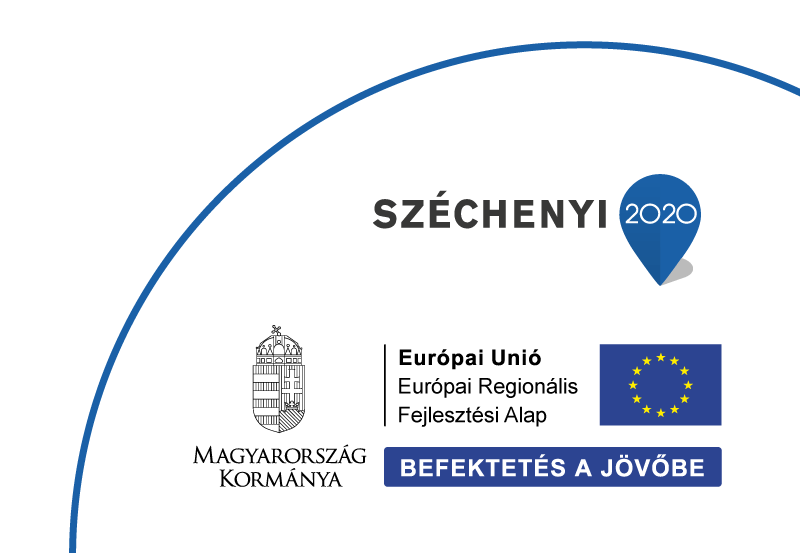Vibrational and rotational excitation in astronomically relevant molecular collisions
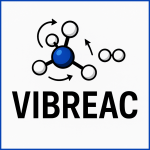 |
Rövid név |
VIBREAC |
| Azonosító |
101244231 / Call ID: HORIZON-WIDERA-2024-TALENTS-02 |
| Kezdete |
01/07/2025 |
| Vége |
30/06/2027 |
| Weboldal |
|
| Szakmai vezető az Atomkiban |
|
The VIBREAC project is an MSCA postdoctoral fellowship that aims to develop new computational tools based on quasi-classical scattering models and full-dimensional potential energy surface (PES) descriptions to study state-to-state molecular interactions relevant to astrophysics. The new scattering model can handle collisions of polyatomic species with full resolution of their rotational-vibrational (rovibrational) levels, essential for interpreting astronomical observations of complex molecules. The project will be implemented at HUN-REN ATOMKI with new developments in molecular scattering dynamics and potential energy surface calculations. The grantee (Sandor Demes) will conduct several secondments at the University of Szeged (Hungary) to receive training in computational chemistry and PES development and at Katholieke Universiteit Leuven (Belgium) to expand his knowledge of the rovibrational description of molecular scattering.
The total budget is 182,744 EUR, which is granted entirely to the host institute, HUN-REN ATOMKI.
|
Systematic studies of astrophysical ices and materials within simulated space enviroments
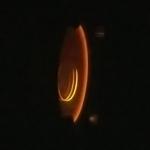 |
Rövid név |
- |
| Azonosító |
NKFIH 151196 ADVANCED |
| Kezdete |
01/01/2025 |
| Vége |
31/12/2028 |
| Szakmai vezető az Atomkiban |
|
The aim of the project is to explore the physical properties of materials in the range of environmental conditions encountered in space. In particular, we study the properties of condensed molecular films (ices) and their gas-phase components as well as materials proposed for utilisation in space. The experiments will be performed under (i) ultrahigh-vacuum conditions, (ii) across the range of temperatures typically encountered in space, and (iii) during exposure to space radiation encompassing ions with energies over the keV and MeV range, thus mimicking the solar wind.
The project can be divided into two distinct but complementary work-packages, focusing on (1) the physical structure of ices in space, and (2) the irradiation of materials (including astrophysically relevant ices and gases that show potential for applications in space exploration) under conditions analogous to those encountered in space.
Project budget: 119 880 000 HUF
|
Addressing PRiorities of Evaluated Nuclear Data in Europe
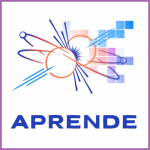 |
Rövid név |
APRENDE |
| Azonosító |
101164596 / Call ID: HORIZON-EURATOM-2023-NRT-01 |
| Kezdete |
01/10/2024 |
| Vége |
30/09/2028 |
| Weboldal |
|
| Szakmai vezető az Atomkiban |
|
The project is designed to address the critical demand for accurate and advanced nuclear reaction and decay data. These data are essential for modelling and simulation tools crucial to energy-related applications (including nuclear fission and fusion) as well as healthcare, space exploration and radiation protection.
The main objectives are (1) conducting experiments to obtain new and improved nuclear data, (2) evaluating available experimental nuclear data, (3) validating evaluated nuclear data files, (4) supporting access to key experimental infrastructures, (5) developing and improving detectors, techniques, infrastructures, analysis methods, (6) developing new infrastructure to develop isotopically enriched materials, (7) identifying new nuclear data priorities, (8) assessing nuclear data competences. ATOMKI contributes to objective (2) and (8).
The consortium includes 37 partners and is lead by CIEMAT, Spain. The objectives will financed by 4 MEUR, the share of ATOMKI is 21.9 kEUR.
|
Modern Device Independent Cryptography
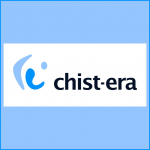 |
Rövid név |
MoDIC |
| Azonosító |
2023-1.2.1-ERA_NET-2023-00009 |
| Kezdete |
15/03/2024 |
| Vége |
14/03/2027 |
| Weboldal |
|
| Szakmai vezető az Atomkiban |
|
The aim of the project is to improve the theoretical background on which device-independent quantum cryptography is based to a level that it becomes feasible in real-life applications. We will achieve this by investigating new Bell nonlocality tests which are the foundation of quantum cryptography, by streamlining security proofs, and by inventing new experimental setups.
ATOMKI contributes to the project by creating mathematical techniques to designing quantum communication devices that are distributed in novel network topologies.
- Project coordinator: Prof. Marcin Pawłowski (University of Gdańsk, PL)
- Consortium partners: University of Gdańsk (PL), INRIA Lyon (FR), ETH Zurich (CH), ATOMKI (HU)
- Budget of the whole project: 1.064.600 EUR
- Budget of ATOMKI: 60.706.800 HUF
|
Research Infrastructure Access in Nanoscience & Nanotechnology
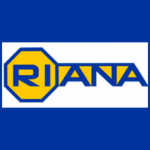 |
Rövid név |
RIANA |
| Azonosító |
Horizon Europe 101130652 |
| Kezdete |
01/03/2024 |
| Vége |
29/02/2028 |
| Weboldal |
|
| Szakmai vezető az Atomkiban |
|
RIANA unites 7 European networks of top-level research infrastructures to provide advanced techniques for nanofabrication, characterization and simulation. It offers efficient access to 69 research infrastructures through a single-entry point. RIANA aims to attract both experienced and new users from academia and industry, adapting to emerging scientific topics and needs.
- Project coordinator: Deutsches Elektronen-Synchrotron, DESY (Hamburg, Germany)
- Members: 56 consortium partners from 22 European countries
- Role of ATOMKI: Transnational Access provider, provides beamtime for external users at the Tandetron particle accelerator
- Budget of the whole project: 15 MEUR
- Of which budget of ATOMKI: 35,700 EUR
|
Process Attribution of Regional Emissions
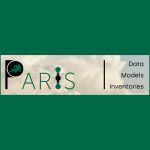 |
Rövid név |
PARIS |
| Azonosító |
101081430 /Call ID: HORIZON-CL5-2022-D1-02 |
| Kezdete |
01/01/2023 |
| Vége |
31/12/2026 |
| Weboldal |
|
| Szakmai vezető az Atomkiban |
|
The aim of the 4-year project is to use greenhouse gas emission data calculated from atmospheric measurements to help refine national emission inventories based on activity statistics. The project focuses on eight European countries, including Hungary. The project places particular emphasis on methane (CH4), nitrous oxide (N2O) and halogenated gases (F-gases), which play a key role in the atmospheric greenhouse effect.
The greenhouse gas monitoring station maintained by ATOMKI at Hegyhátsál is one of the stations on which the project bases. Here, atmospheric concentration of nitrous oxide is continuously measured and air samples are taken for F-gas analyses. The emission data calculated from these measurements is shared with the national organizations responsible for the emissions inventories.
The project is being implemented within the framework of a consortium. The 17-member consortium of 8 countries is led by Utrecht University. The total funding for the project is 3,526,154.50 EUR, of which ATOMKI will receive 178,000 EUR.
|
European Research Infrastructure for Heritage Science Implementation Phase
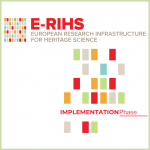 |
Rövid név |
E-RIHS IP |
| Azonosító |
HORIZON-INFRA-2021-DEV-02 Project No. 101079148 |
| Kezdete |
01/10/2022 |
| Vége |
31/12/2024 |
| Weboldal |
|
| Szakmai vezető az Atomkiban |
|
Research capacities and resources are crucial to enhancing the understanding, care and sustainable use of heritage to enrich people’s lives, both today and in the future. The mission of the European Research Infrastructure for Heritage Science (E-RIHS) is to deliver integrated access to interdisciplinary expertise, data and cutting-edge technologies. The E-RIHS Implementation Phase (E-RIHS IP) partnership brings together representatives of the national nodes of the countries that expressed their willingness to support the establishment of the ERIC (European Research Infrastructure Consortium). It aims at preparing E-RIHS ERIC to become operational in the field of heritage science at the European and global level.
The consortium involves 14 European partners and is lead by National Research Council (CNR, Italy).
The overall cost is 1.7 MEUR, the EU contribution is 1.4 MEUR,
from which cost of ATOMKI is 43 kEUR, the EU contribution is 34 kEUR.
|
EUROpean Laboratories for Accelerator Based Science
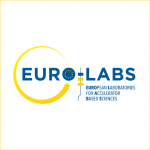 |
Rövid név |
EURO-LABS |
| Azonosító |
HORIZON-INFRA-2021-SERV-01-07, Grant agreement No. 101057511 |
| Kezdete |
01/09/2022 |
| Vége |
31/08/2026 |
| Weboldal |
|
| Szakmai vezető az Atomkiban |
|
EURO-LABS is a network of 33 research and academic institutions from 18 European and non-European countries, involving 47 research infrastructures in the nuclear physics, accelerators and detectors pillars. Within this large network, EURO-LABS will ensure diversity and actively support researchers from different nationalities, gender, age, grade and variety of professional expertise.
The participation of ATOMKI in EURO-LABS is realized through the CLEAR cluster. CLEAR is a consortium of three installations:
- ATOMKI in Debrecen (support: 93,125.00 EUR),
- CNA in Seville (357,506.25 EUR) and
- IST in Lisbon (65,000.00)
offering access to stable-ion and neutron beams. The consortium has a common Program Advisory Committee. The homepage of CLEAR contains all the rules of the Transnational Access services.
Accelerators offered by ATOMKI:
|
Nuclear technology research and development based on particle accelerators
 |
Rövid név |
- |
| Azonosító |
TKP2021-NKTA-42 |
| Kezdete |
01/01/2022 |
| Vége |
31/12/2025 |
| Weboldal |
|
| Szakmai vezető az Atomkiban |
|
- The project involves the applications of nuclear technology based on the data collected through the fundamental research, that's why it is indispensable to determine nuclear structure as well as nuclear reaction data by using experimental technique.
- One of the important area of the nuclear technology is the production of radioisotopes, on the one hand as a radiation source, on the other hand as an additive, as well as in the volume of the material to be investigated. These tracers can then applied for following processes in a rapid and economic way.
- Production of new surface layers by irradiation and investigation of those, elaboration of irradiation and measurement methods for wear measurement of materials of novel constitution and structure. Development of novel nuclear particle detectors based on nanotechnology.
- Development of accelerator based production on therapeutic and diagnostic radionuclides, elaboration of their radiochemical separation. Development of theranostic radioisotopes and targeted radionuclide therapy.
Budget: 1.191.526.000 HUF
|
Investigation of spatial and temporal changes of tritium in precipitation in the Carpathian Basin, with special regard to the characterization of stratiform and convective precipitation
 |
Rövid név |
CNIP - Carpathian Basin Network of Isotope in Precipitation |
| Azonosító |
2020-2.1.1-ED-2021-00172 |
| Kezdete |
01/01/2022 |
| Vége |
31/12/2025 |
| Szakmai vezető az Atomkiban |
|
In our research, we deal with an important element of water cycle that is precipitation and its isotopic composition. Rainwater is formed by a number of complex atmospheric processes, in different clouds and under dynamic conditions, so it can be divided into two major groups: stratiform (drizzle, fog, rain, snowfall) and convective (shower rain, thunderstorm) precipitation. Atmospheric physical mechanisms give rainwater a characteristic isotopic composition, leaving traces of formation processes. The main goal of our research is to investigate the specific isotope composition of the two main rain types and their spatial and temporal variability. In order to achieve this, we are developing and operating a precipitation collection network in the Carpathian Basin and determine the isotope composition of the collected samples. Using the measured and observed data, we gain insight into the relationship between rainfall type and isotope composition.
Project budget: 27,748,866 HUF
|
1 – 10 mutatva 43 elemből





 Magyar
Magyar
